1. Raw Hot Peppers
Microwaving hot peppers releases capsaicin—the compound that gives them their heat—into the air as vapor. This can irritate your throat, eyes, and skin, creating an unpleasant kitchen hazard. To safely prepare peppers for salsa, tacos, or other dishes, roast, grill, or sauté them in a well-ventilated space.
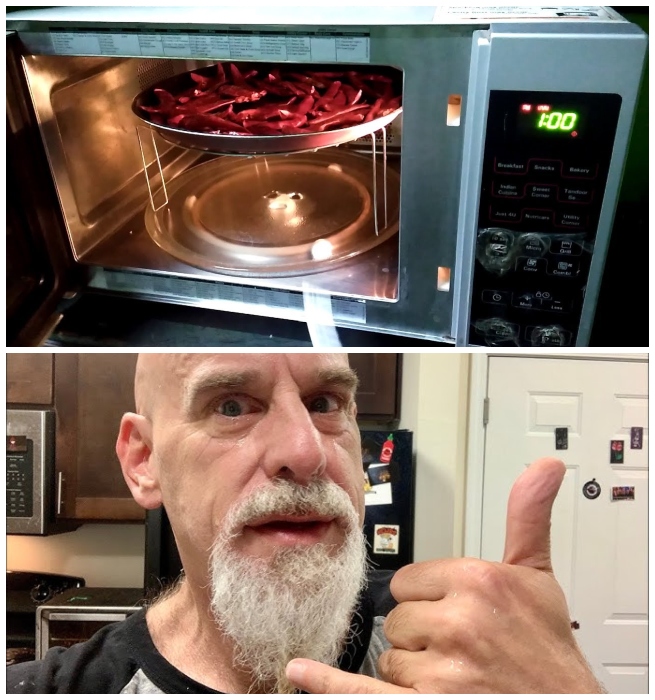
These methods enhance flavor without risking discomfort. Always wash your hands thoroughly after handling peppers to avoid transferring spicy oils to your face or eyes. Though the microwave may seem quick, it isn’t worth the risks. Stick to safer methods to enjoy your peppers without the fiery side effects.
2. Eggs in Their Shell
Microwaving whole eggs is a disaster waiting to happen. As the moisture inside the shell heats, it becomes steam, creating pressure that can cause the egg to explode. This results in a messy microwave and potential burns. For safer and perfectly cooked eggs, boil them in water, steam them, or use a pressure cooker like an Instant Pot.
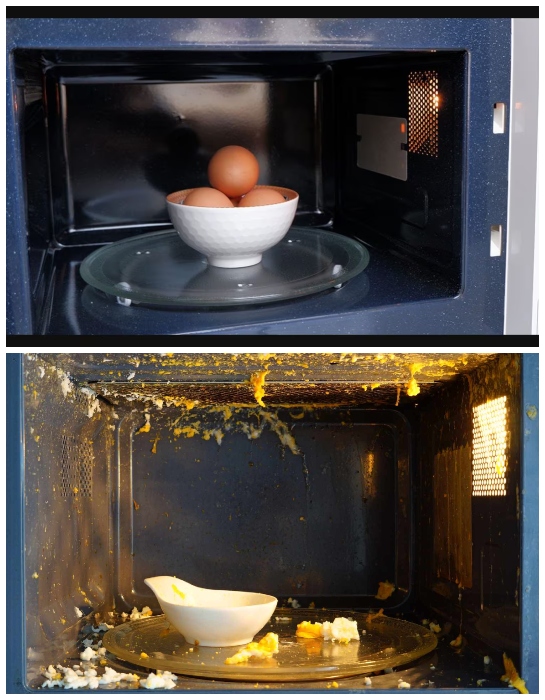
These methods ensure reliable results without the risk of shell-shattering explosions. While microwaving might seem like a shortcut, the cleanup and danger far outweigh the time saved. Stick to traditional methods for a safe and hassle-free experience.
3. Grapes
While grapes are a tasty snack or salad topping, the microwave is no place for them. Heating grapes can cause sparks due to electromagnetic fields, potentially damaging your appliance or even starting a fire. Instead, try roasting them for a caramelized flavor or enjoy them fresh or frozen.
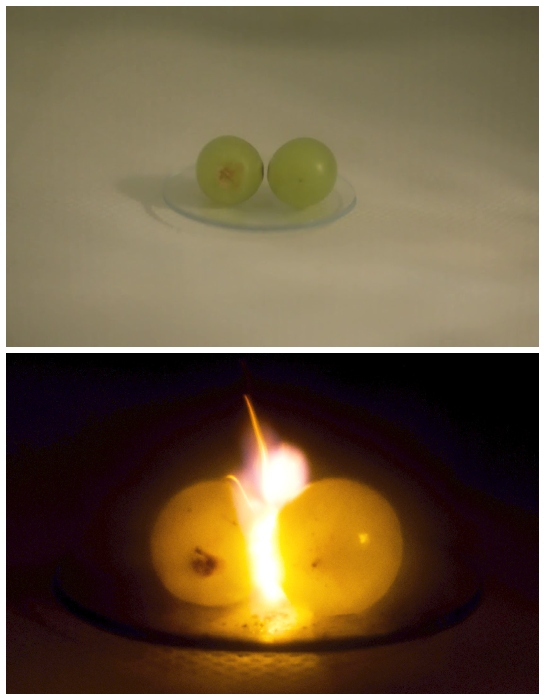
Their natural sweetness shines without the risk of sparks flying. The science behind grape sparking is fascinating, but it’s not worth experimenting in your kitchen. Keep grapes far from the microwave to preserve their taste and ensure safety. Stick with traditional methods for enjoying this versatile fruit.
4. Breaded or Fried Leftovers
Breaded or fried leftovers lose their appeal in the microwave. The once-crispy coating turns soft and soggy, ruining foods like fried chicken, fish, or sweet potato fries. For best results, reheat them in an oven or air fryer. Placing them on a wire rack over a baking sheet ensures even heating and restores their golden crunch.
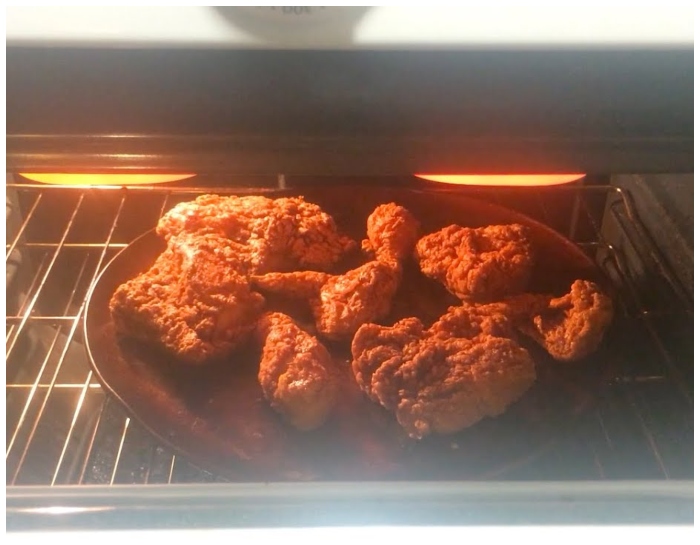
Microwaving might be faster, but it can’t match the texture and flavor of these traditional methods. Your crispy favorites deserve better than a soggy, microwaved result. Take the extra time to revive them properly and enjoy them as they were meant to be.
5. Frozen Meat
While the microwave’s defrost setting can help thaw frozen meat, cooking it fully in the microwave is a recipe for disappointment. Microwaves heat unevenly, often leaving the exterior tough and dry while the center remains undercooked. For best results, thaw meat in the refrigerator overnight.
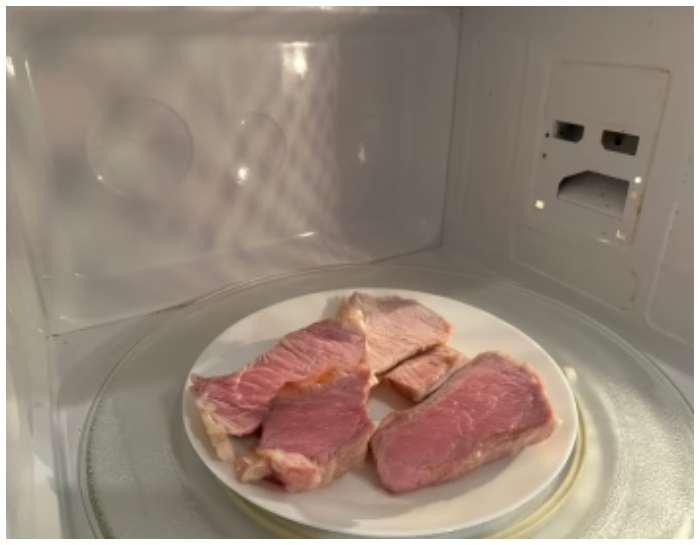
If time is short, a quick defrost in the microwave followed by cooking in a skillet, oven, or grill ensures better texture and flavor. For larger frozen cuts, an Instant Pot is a safer, more effective tool for even cooking. Avoid microwaving frozen meat entirely to preserve its quality and taste.
6. Alcoholic Beverages
Warm cocktails like Mulled Wine or Hot Toddies are delightful, but heating alcohol in the microwave is risky. Alcohol molecules are volatile and can ignite when exposed to electromagnetic waves. Instead, use a saucepan on the stovetop for even heating and safety.
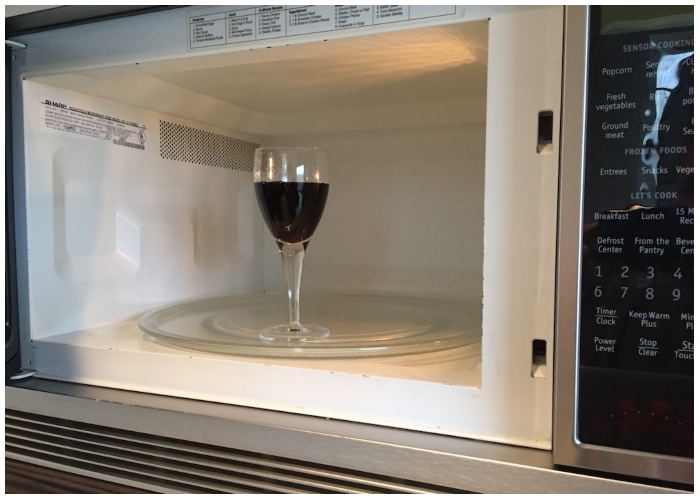
A slow cooker works well for large batches, especially for drinks like spiked cider that benefit from longer simmering times. Avoid the microwave entirely to prevent accidents and enjoy a perfectly heated beverage without worry. Safety is key when preparing your boozy creations, so stick to traditional methods for warming your favorite drinks.
7. Anything That’s Expired
Reheating expired food is a bad idea, regardless of the appliance. Leftovers should be refrigerated within two hours and eaten within 3-4 days. Spoiled food can harbor harmful bacteria that microwaving won’t eliminate. Use the “use by” dates on packages as a guide, and trust your senses for anything past its prime.
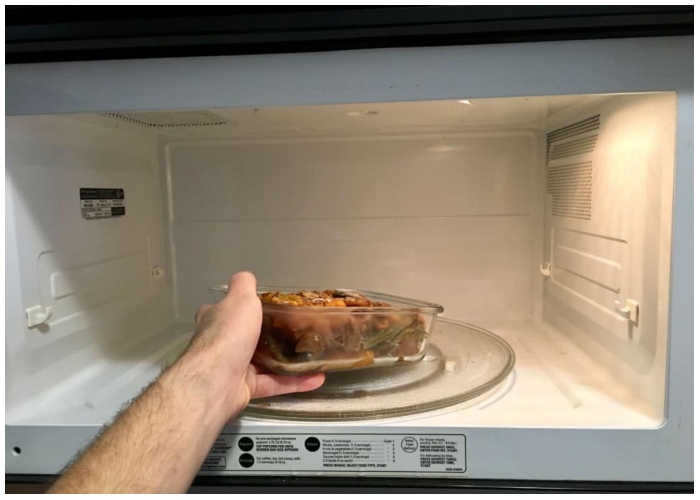
If something smells or looks off, toss it. When in doubt, follow food safety guidelines to protect yourself from unnecessary health risks. Microwaving isn’t a magic fix for expired food—it’s always better to play it safe and discard questionable items.
8. Leftover Potatoes
Potatoes can harbor harmful bacteria like Clostridium botulinum, which microwaving won’t eliminate. When reheating cooked potatoes, ensure they’ve been properly refrigerated soon after cooking to prevent bacterial growth. Skip aluminum foil, as it traps moisture and accelerates spore growth. Instead, bake potatoes without foil for a crisp skin and safer reheating.
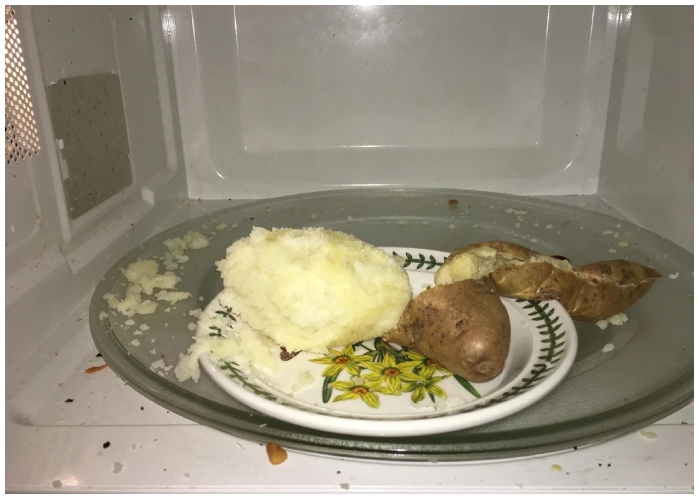
Proper handling is crucial to avoid stomach trouble. Always refrigerate uneaten potatoes quickly and avoid leaving them at room temperature for extended periods. When reheating, stick to the oven for even warmth and a deliciously crispy result. Protect your health while enjoying leftover spuds safely.
9. Processed Meats
Bacon, sausages, hot dogs, and lunch meats should never be microwaved. Heating processed meats in the microwave can lead to the formation of cholesterol oxidation products (COPs), which research has linked to inflammation, plaque buildup, and coronary heart disease.
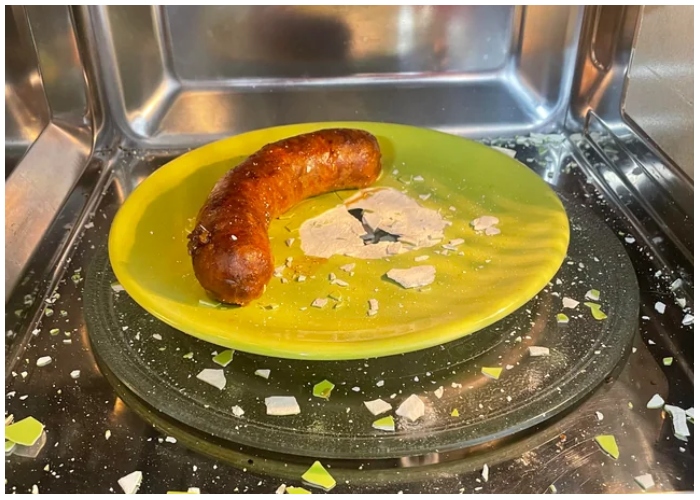
Grilling can also increase COPs, so baking or sautéing these meats in a pan is the safest way to avoid harmful compounds. These methods also ensure even cooking and better flavor. Processed meats are convenient but require careful preparation to reduce health risks. Avoid the microwave entirely to minimize exposure to COPs and maintain a safer, tastier meal.
10. Tomato Sauce
Microwaving tomato sauce is a messy gamble. Steam builds up beneath the thick consistency of the sauce and struggles to escape, often causing splatters or even explosions that can burn you or stain your clothes. Instead, heat tomato-based sauces on the stovetop in a small pan.
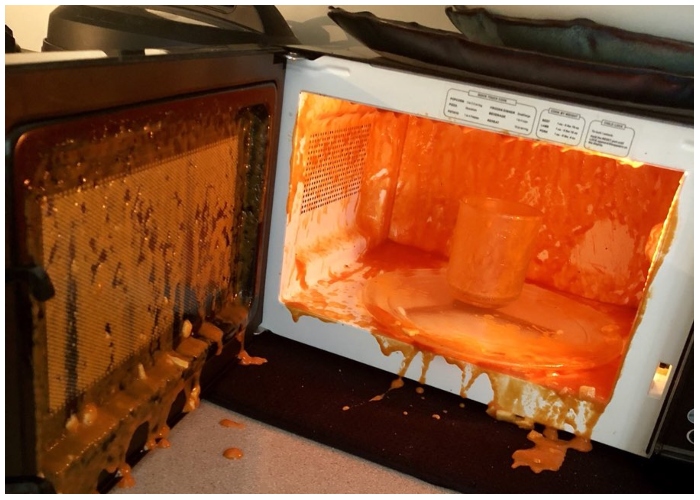
Stirring as it warms ensures even heating while preventing dangerous steam pockets. This method is both safer and cleaner, leaving you with a perfectly heated sauce and a tidy kitchen. Ditch the microwave and enjoy hassle-free preparation while keeping your clothes and microwave walls spotless.
11. Mug of Water
Microwaving a mug of water may seem quick, but it can be dangerous. Water can become superheated, where it reaches a boiling point without forming visible bubbles. Adding a tea bag or stirring can trigger sudden bubbling or even cause the water to explode. This rare but real hazard can lead to severe burns.
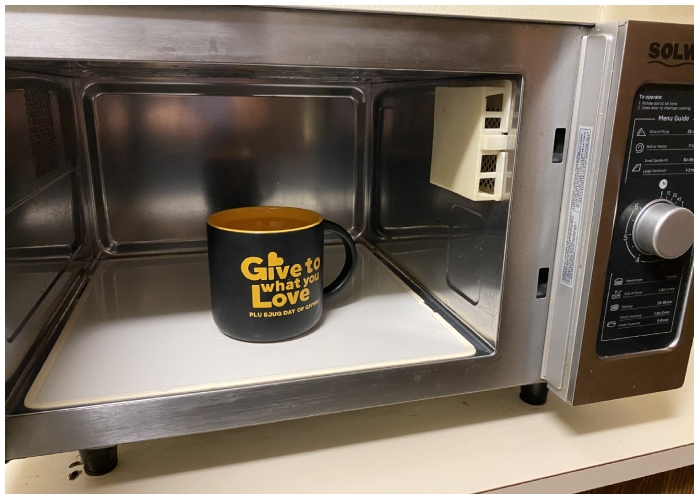
To heat water safely, use a kettle or saucepan on the stove. While it may take a little longer, the controlled heating process prevents dangerous incidents. Keep your microwave for reheating food, not boiling water, and prioritize safety when preparing your tea or coffee.
12. Reheating Pasta
Leftover pasta can dry out in the fridge, and microwaving it only makes it worse. Creamy pastas fare particularly poorly, as the fat separates when reheated. Instead, reheat pasta on the stovetop, adding a bit of water or cream depending on the dish.
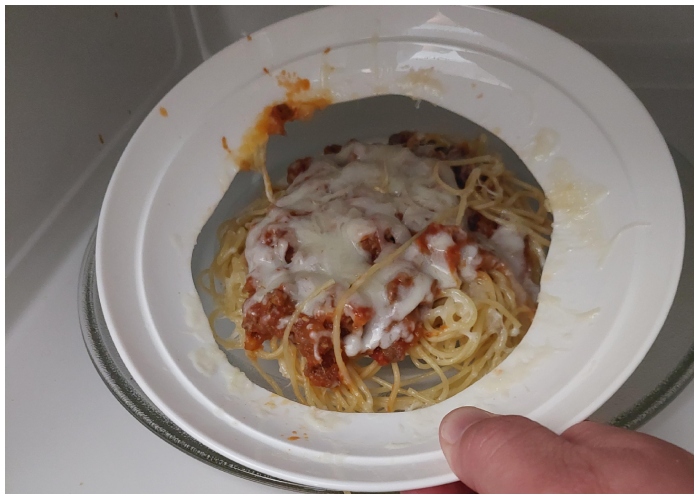
For tomato-based pasta, add two tablespoons of water and toss it in a pan over medium heat until evenly warmed. Cream-based pasta benefits from added cream or milk to restore its smooth texture. With consistent stirring and gentle heat, your pasta will regain its moisture and flavor. Skip the microwave for a fresher, tastier result.
13. Casseroles
Microwaving casseroles often leads to uneven heating and soggy toppings, making the oven a better option. Preheat the oven to 350°F and place the casserole dish on the counter to prevent glass or ceramic from cracking due to sudden temperature changes. Cover the top with aluminum foil to keep it moist and prevent over-browning.
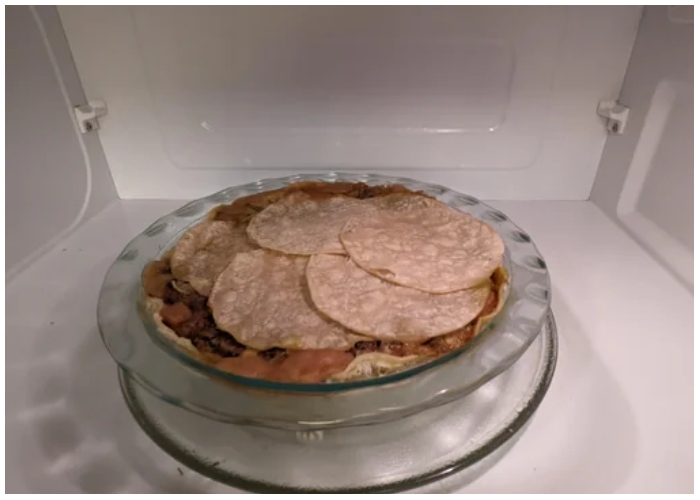
Remove the foil during the last few minutes for a crispy topping. Heat the casserole until the center is hot and bubbly, checking to ensure it reaches 165°F as recommended by the USDA. Though the oven takes longer, it preserves texture and flavor far better than the microwave.
14. Carrots
Carrots in the microwave? Think again! Minerals from the soil can react with the microwave, causing sparks, a phenomenon called arcing. This can damage your appliance or even pose a fire risk. Hot dogs are also prone to arcing due to unevenly mixed salts and additives.
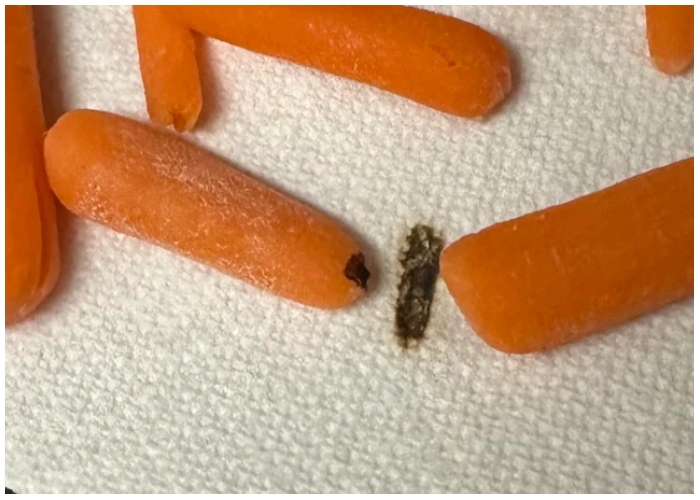
If you notice sparks, turn off the microwave immediately and switch to a safer cooking method like boiling, sautéing, or baking. Keeping your carrots and hot dogs out of the microwave preserves both safety and flavor. Avoid the risk and choose conventional methods for preparing these foods.
15. Rice
Reheating rice in the microwave can pose serious risks. The common bacteria Bacillus cereus often survives initial cooking and produces heat-resistant spores that can multiply in warm, humid environments. If rice is left at room temperature after microwaving, these toxins can cause food poisoning, leading to nausea or diarrhea.
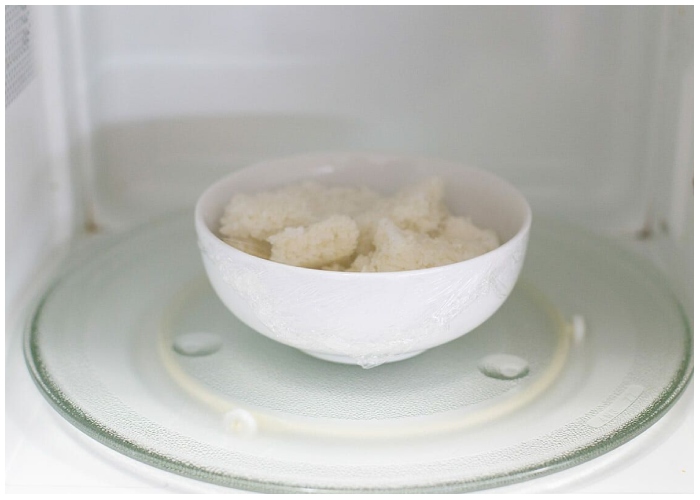
To ensure safety, reheat rice on the stovetop until it reaches near boiling, and keep it above 140°F before serving. Proper handling and reheating methods help prevent contamination and ensure your rice is safe to eat. Don’t underestimate the risks of improperly reheated rice.
16. Breast Milk or Formula
Never microwave breast milk or formula for your baby. Microwaves heat unevenly, creating dangerous hot spots in the liquid that could burn your child. Instead, warm the bottle under running hot water for one to two minutes or place it in a pan of warm water removed from the stove. These methods ensure safe, even heating.
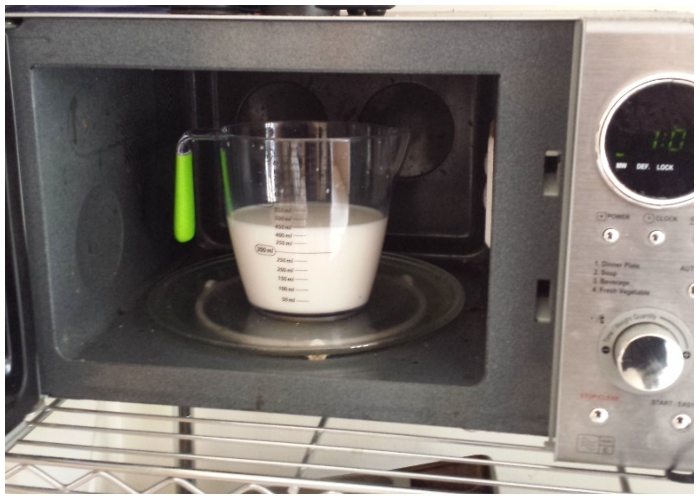
Proper warming protects your baby’s health while preserving the nutritional value of breast milk or formula. Microwaving might seem convenient, but the risks far outweigh the benefits when it comes to feeding your little one.
17. Chicken
Chicken should never be microwaved. Microwaves heat unevenly, leaving cold spots where bacteria like salmonella can survive. Properly cooking chicken requires thorough, even heat to eliminate harmful bacteria. Studies show people who microwave chicken are more likely to get sick compared to those using a skillet or oven.
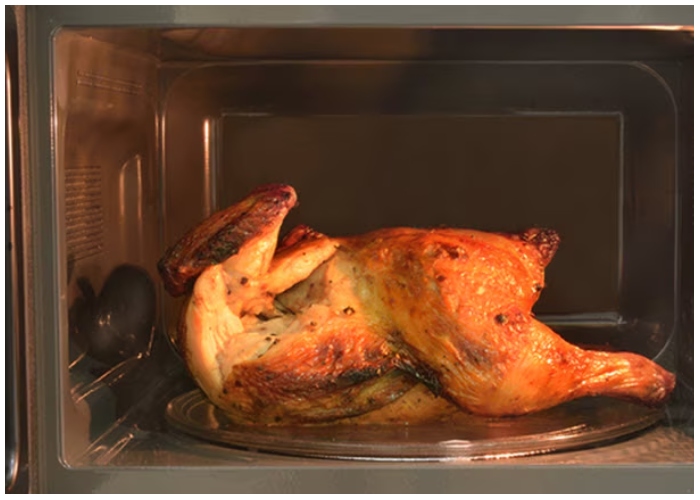
Always cook or reheat chicken using stovetop or oven methods to ensure safety. Chicken must reach an internal temperature of 165°F to be safe to eat. Avoid shortcuts and opt for reliable cooking methods to protect your health and enjoy a properly cooked meal.
18. Oatmeal
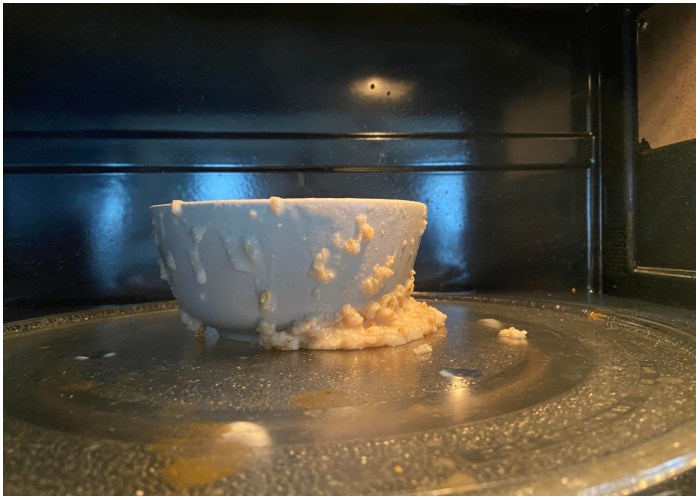
Better yet, cook it on the stovetop for consistent results and better texture. Avoid rushing the process to keep both your oatmeal and microwave in perfect condition. Taking these steps ensures a hearty breakfast without the hassle of cleanup.
19. Beets
Reheating beets in the microwave can cause their naturally occurring nitrates to convert into nitrosamines, compounds linked to potential health risks. This process is similar to what occurs with spinach. To enjoy beets safely, avoid microwaving and try roasting them in the oven, which enhances their natural sweetness while maintaining nutrients.
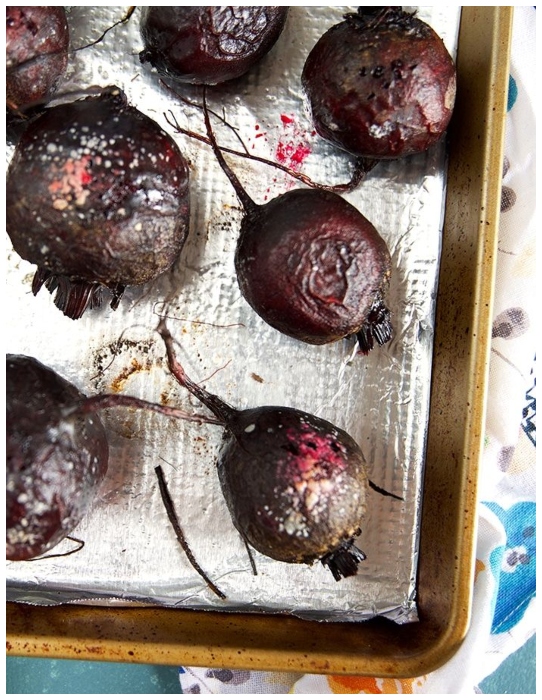
Beets are also delicious served cold in salads or blended into smoothies. Their vibrant color and earthy flavor make them versatile for many dishes. By choosing safer reheating methods, you’ll maximize their taste and health benefits. Skip the microwave and savor beets prepared with care.
20. Eggplants
Microwaving eggplants often results in uneven heating, leaving them rubbery and unpleasant to eat. The intense heat can also amplify their natural bitterness, making the dish less enjoyable. Instead, opt for baking, grilling, or sautéing eggplants, which preserves their creamy texture and enhances their flavor.
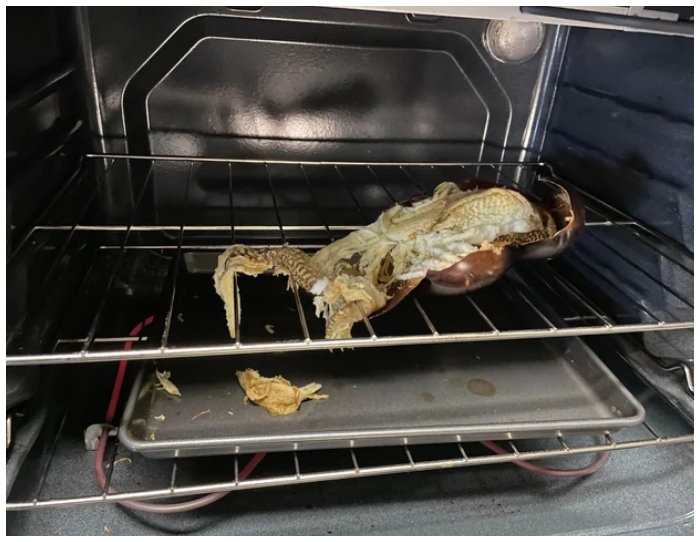
These methods are particularly important for recipes like eggplant parmesan or baba ganoush, where consistency matters. Additionally, traditional cooking methods ensure even heating and bring out the best in this delicate vegetable. Avoid the microwave and stick to these proven techniques for a delicious, satisfying meal every time.
21. Spaghetti Squash
Microwaving spaghetti squash can lead to uneven cooking, creating mushy or overly stringy textures that ruin its appeal. For consistent results, roast the squash in the oven. Slice it in half, remove the seeds, and bake it cut-side down until tender. This method ensures the flesh separates easily into perfect spaghetti-like strands.
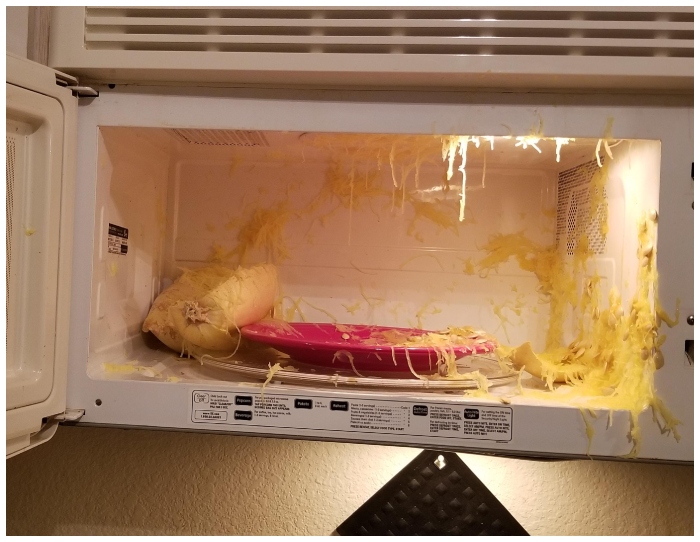
Spaghetti squash is a versatile low-carb alternative to pasta, and oven roasting enhances its natural sweetness while maintaining the desired texture. Though microwaving might seem faster, the superior flavor and consistency achieved through roasting make the extra time worthwhile. Skip the microwave for this unique vegetable.
22. Banana
Microwaving bananas can turn their natural sugars into a caramelized mess and create an unappealing aroma. The heat often causes uneven texture, leaving parts mushy while others remain firm. If you need to ripen bananas for baking, place them in a brown paper bag and let them sit at room temperature.
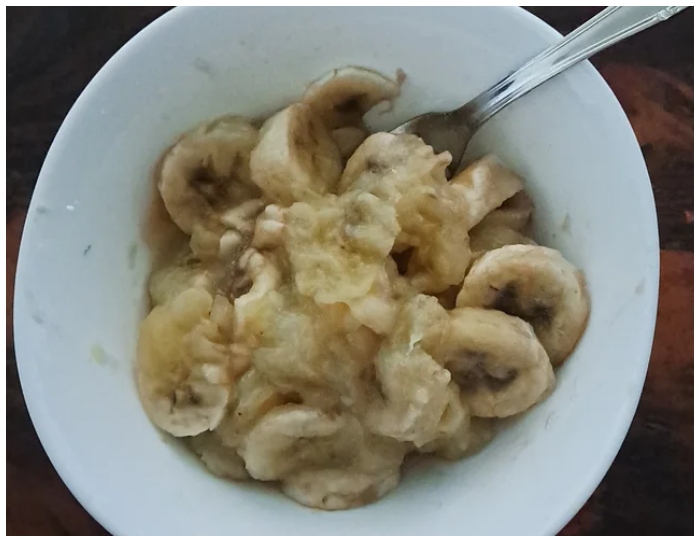
For a warm banana dessert, sauté slices in a pan with butter and sugar to create a delicious caramelized treat. This method enhances their flavor and texture without the drawbacks of microwaving. Skip the microwave to enjoy bananas in their best form, whether raw or cooked.
23. Shellfish
Microwaving shellfish, such as shrimp, crab, or lobster, often results in uneven cooking and rubbery textures that ruin their natural appeal. Additionally, the intense heat can cause shells to crack or splinter, posing a choking hazard. Microwaving can also amplify unpleasant seafood odors, making the process less desirable.
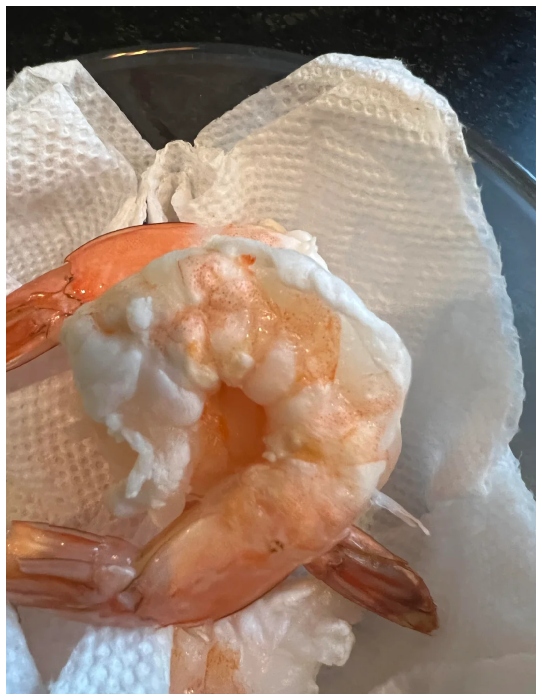
For reheating or cooking shellfish, steaming or baking is the ideal choice. These methods evenly distribute heat, preserving the delicate texture and flavor of the seafood. Shellfish is best enjoyed when handled with care, and avoiding the microwave ensures your meal is as fresh and delicious as intended. Stick to traditional methods for optimal results.
24. Cheese
Microwaving cheese can cause it to melt unevenly, burn, or become rubbery. Soft cheeses like brie may curdle, while harder cheeses can turn tough and unappetizing. The microwave’s rapid heating destroys cheese’s creamy texture and rich flavor, making it less enjoyable.
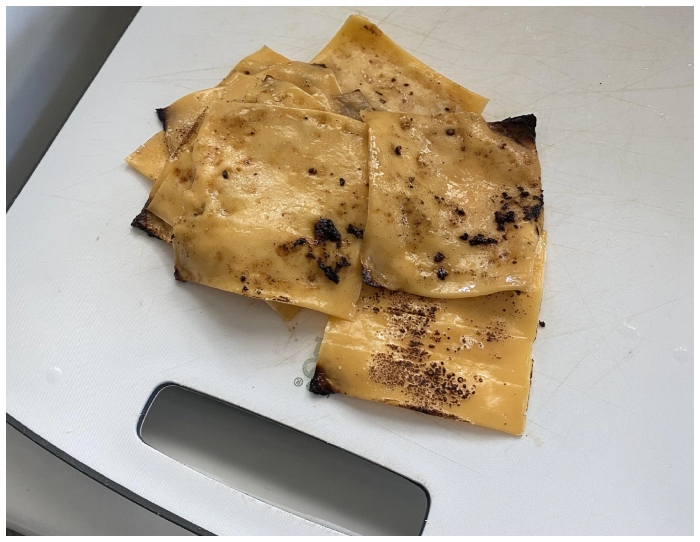
For best results, melt cheese on the stovetop or in the oven at a low temperature. These methods provide even heat distribution, ensuring a smooth, velvety melt. Whether you’re preparing a dip or topping a dish, using gentle heat brings out cheese’s full potential. Skip the microwave and treat your cheese to the care it deserves.
25. Oils
Pure oils, such as olive oil, butter, or coconut oil, should never be microwaved. These oils heat quickly and can easily reach their smoke point, releasing harmful compounds and potentially starting a fire. The microwave also heats oils unevenly, increasing the risk of burns. To safely warm or melt oils, use a stovetop or double boiler for controlled heat.
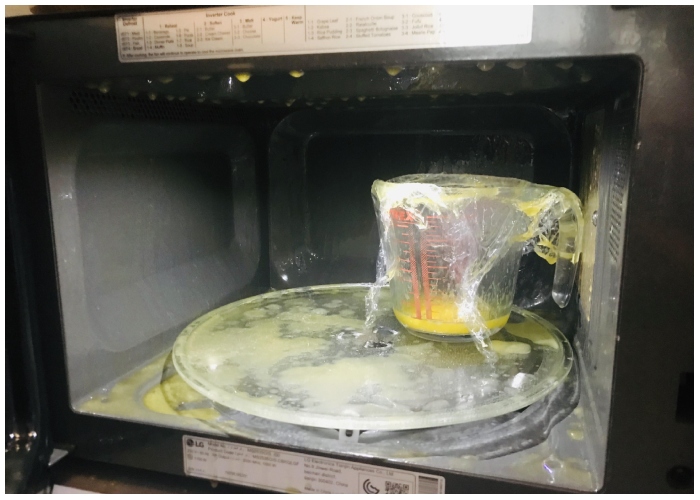
This method preserves the flavor and avoids unnecessary hazards. Whether for cooking or baking, oils require gentle handling to maintain their quality. Avoid the microwave and use traditional methods to keep your meals safe and flavorful.
26. Whole Fruits
Whole fruits like apples, oranges, or peaches should never go in the microwave. Their high water content can create steam pockets inside the fruit, leading to sudden explosions that damage the microwave or cause burns. For warm fruit dishes, slice the fruit and cook it in a skillet with sugar or bake it in the oven for even heating.
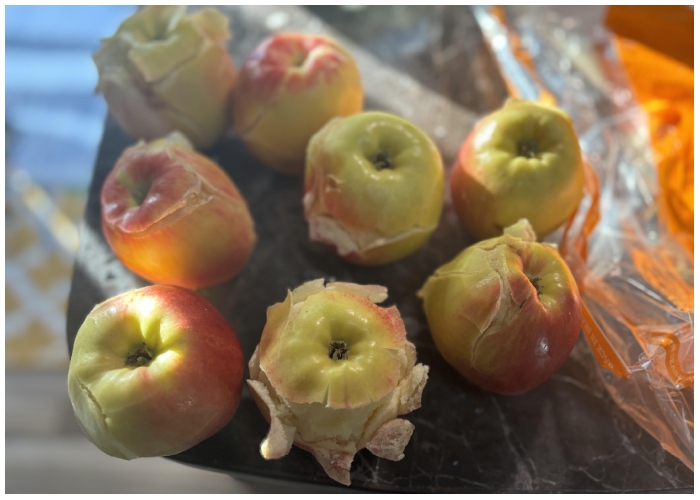
This brings out the fruit’s natural sweetness without the risk of bursting. Avoid the microwave and choose these safer methods for preparing warm fruit treats. Enjoy your fruits safely and deliciously by sticking to proven cooking techniques.
27. Avocados
Microwaving avocados to ripen them faster is a mistake. The microwave alters their texture, often leaving them mushy or unevenly warmed. The heat can also cause the skin to burst, leading to potential mess and waste. To ripen avocados more quickly, place them in a brown paper bag with a banana or apple and let the natural ethylene gas do its work.
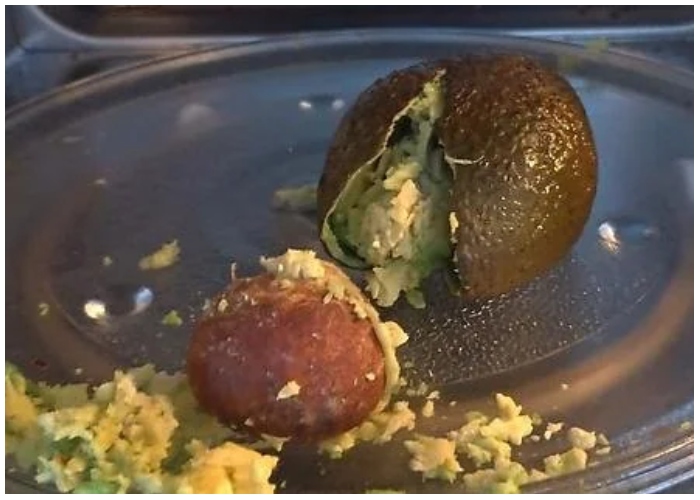
If you need warm avocado for a recipe, gently heat slices in a skillet with a touch of oil. This preserves their creamy texture and flavor. Avoid the microwave and let avocados ripen naturally for the best results.
28. Tomatoes
Microwaving whole tomatoes can lead to messy and even dangerous outcomes. The high water content inside the tomato creates steam as it heats, but the skin prevents it from escaping. This buildup can cause the tomato to burst, leaving your microwave a splattered mess.
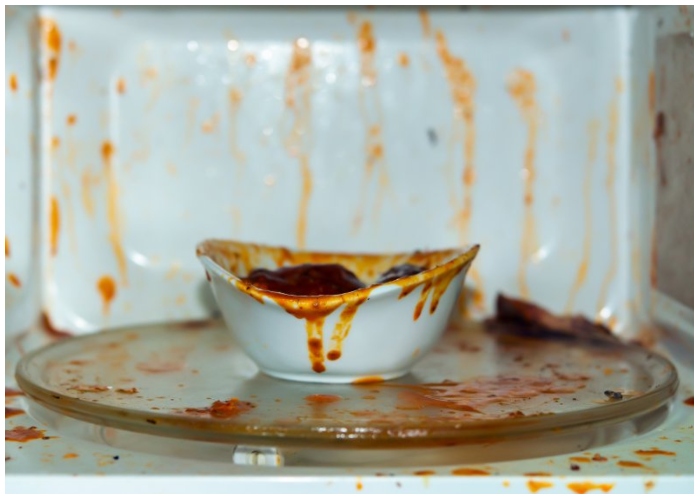
To safely heat tomatoes, slice them first or use a stovetop to sauté or simmer them in a pan. These methods provide even heat distribution while preserving their flavor and texture. Whether for sauces, soups, or toppings, avoid the microwave and handle tomatoes with care to prevent unnecessary cleanup and potential burns.
29. Pumpkin Seeds
Roasting pumpkin seeds in the microwave might seem like a shortcut, but it results in uneven cooking and can even cause the seeds to pop or scorch. The rapid heat of a microwave doesn’t provide the slow, consistent roasting needed to enhance their flavor and crunch.
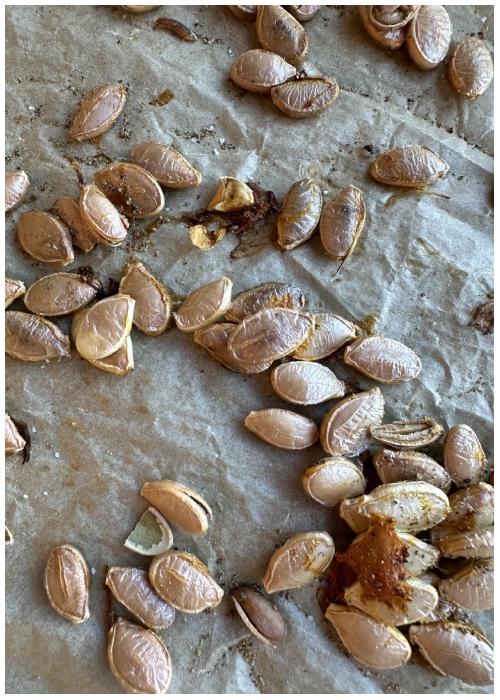
For best results, toss the seeds with oil and spices, then roast them in the oven at a low temperature. This method allows the seeds to crisp evenly without burning. Microwaving pumpkin seeds sacrifices their taste and texture, so stick to traditional roasting for a snack that’s perfectly crunchy and delicious.
30. Garlic
Garlic is delicate and doesn’t fare well in the microwave. Heating whole garlic cloves can cause them to dry out or scorch, ruining their mild, aromatic flavor. Microwaving also fails to develop the caramelized sweetness that roasting or sautéing brings out. For the best results, bake garlic in the oven with a drizzle of olive oil until soft and golden.
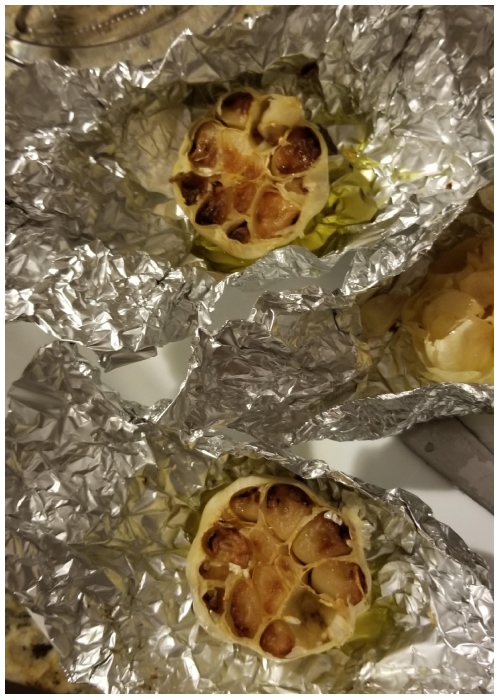
Alternatively, sauté chopped garlic in a skillet for quick and even cooking. Avoid the microwave, as it compromises both the taste and texture of this essential ingredient. Treat garlic right to enjoy its full culinary potential.
31. Leafy Greens
Microwaving leafy greens like kale, spinach, or celery might be a quick solution, but it can be hazardous. Naturally occurring nitrates in these greens can convert into nitrosamines under microwave heat, which studies have linked to potential carcinogenic effects.
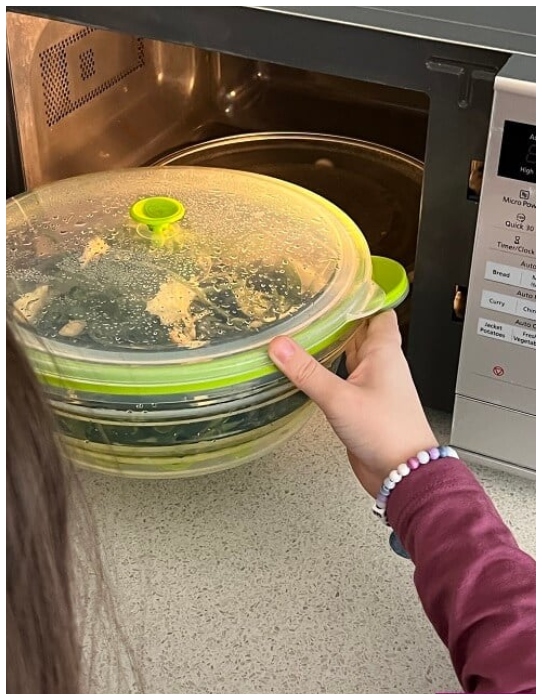
To preserve their nutrients and flavor, reheat greens in a conventional oven or sauté them in a pan. These methods ensure safety while maintaining the health benefits of leafy vegetables. Skip the microwave and choose gentler reheating techniques to enjoy your greens safely and deliciously.
32. Aluminum Foil
Using aluminum foil in a microwave is a fire hazard. The metal reflects microwaves instead of absorbing them, creating intense heat and potential sparks. These sparks can quickly ignite the foil and damage the appliance. This occurs because microwaves emit electromagnetic energy, which heats food by exciting water molecules.
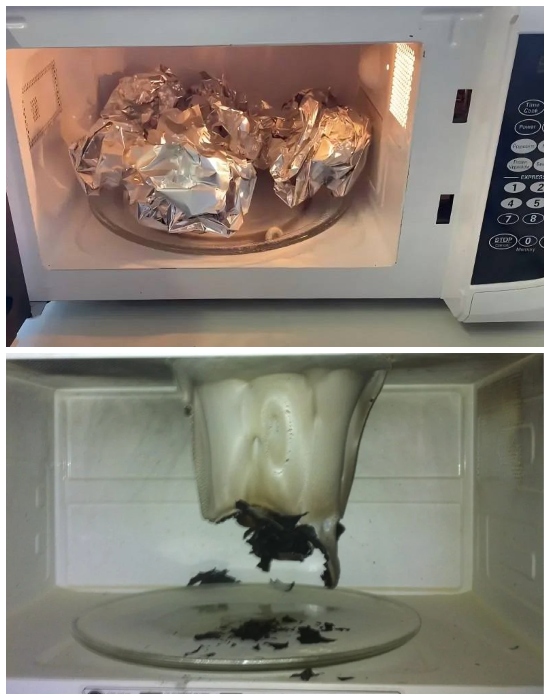
Aluminum interrupts this process, leading to dangerous results. Always transfer food from foil to a microwave-safe container before reheating. Ensuring safety is key to avoiding accidents, as even a small piece of foil can cause significant problems.
33. Paper Bags
Brown paper bags, like those used for groceries or lunches, are unsafe for microwaving. Unlike specially designed microwave popcorn bags, which contain susceptors to absorb heat, ordinary paper bags lack these safety features. When exposed to the high temperatures of microwaves, these bags can emit toxic fumes or catch fire due to their flammability.
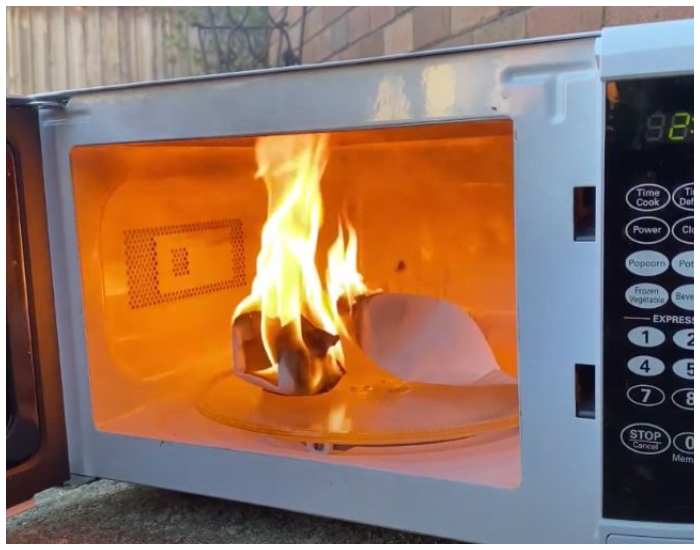
Furthermore, they may smolder or ignite without warning. To reheat food safely, use microwave-safe containers. Avoid the temptation to microwave paper bags, as their unpredictable behavior poses both safety and health risks.
34. Plastic Bags and Plastic Containers
Heating plastic in the microwave can release harmful chemicals, such as BPA and phthalates, into your food. These compounds are used to make plastics clear and flexible but can leach out when exposed to high temperatures. This poses potential health risks, including hormonal disruptions.
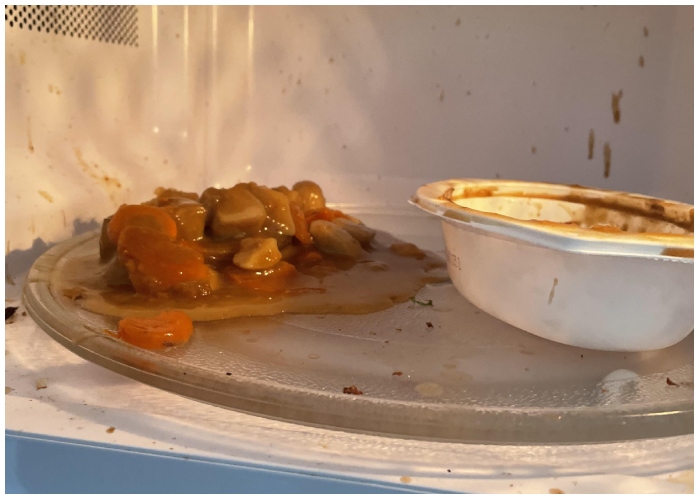 Many plastic bags and containers are not microwave-safe and can melt, warp, or emit toxic fumes. For safe reheating, use glass or ceramic containers labeled as microwave-safe. By avoiding plastics in the microwave, you can protect both your health and the environment from unnecessary harm.
Many plastic bags and containers are not microwave-safe and can melt, warp, or emit toxic fumes. For safe reheating, use glass or ceramic containers labeled as microwave-safe. By avoiding plastics in the microwave, you can protect both your health and the environment from unnecessary harm.
35. Travel Mugs
Most travel mugs are unsuitable for microwaving due to their materials. Stainless steel mugs reflect microwaves, preventing your drink from heating and potentially damaging the appliance. Plastic travel mugs can sometimes be microwave-safe, but only if explicitly labeled. Even then, uneven heating can compromise the quality of your beverage.
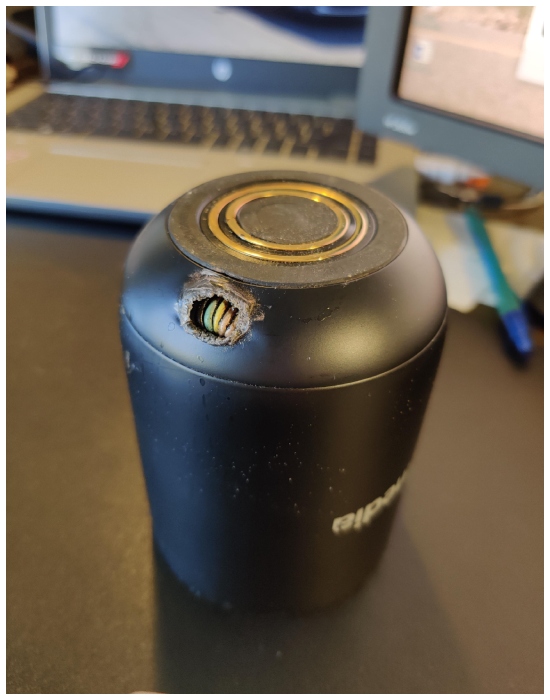
For best results, transfer your drink to a microwave-safe mug, heat it, and then pour it back into your travel mug. This method ensures safety and optimal beverage temperature without risking your microwave or mug.
36. Clothing
Microwaving damp clothing, like shirts or socks, is unsafe and ineffective. Microwaves are designed to heat food by exciting water molecules evenly, but textiles don’t heat uniformly. This can lead to scorching, burning, or even igniting the fabric. Additionally, synthetic materials can melt, creating a sticky, flammable mess.
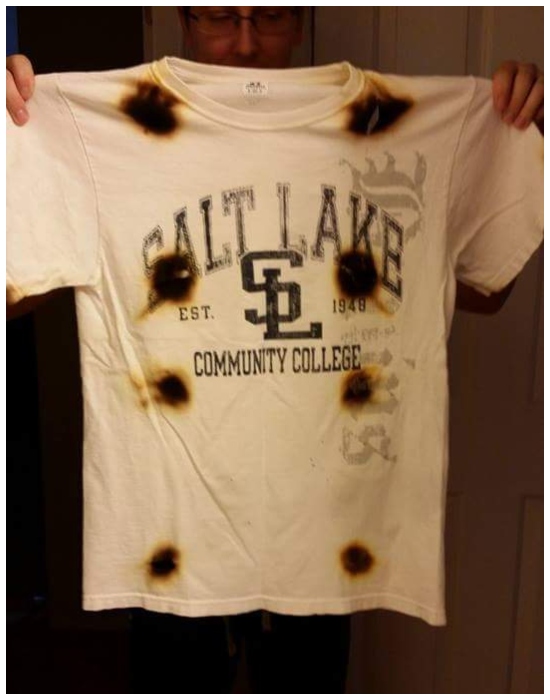
To dry clothes safely, use a conventional dryer or air-dry them naturally. Microwaving clothes not only risks damaging your items but also endangers your microwave. Stick to tried-and-true drying methods to avoid costly accidents.
37. Styrofoam Containers
Polystyrene foam, commonly known as Styrofoam, isn’t microwave-friendly. When heated, it can release harmful chemicals into your food, posing health risks. If the contents inside get too hot, the foam may even melt or collapse, creating a mess. While some foam containers are labeled microwave-safe, always check before using.
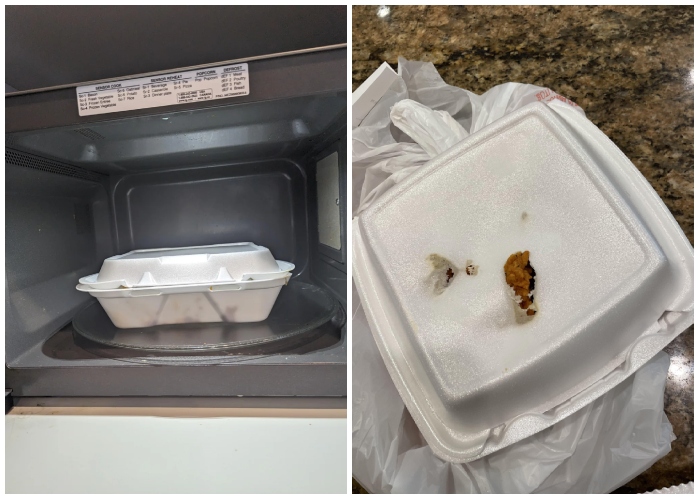
The safest approach is to transfer leftovers to a glass or ceramic dish for reheating. Styrofoam’s inability to handle high heat makes it unsuitable for the microwave. Protect your health and simplify cleanup by choosing safer alternatives for warming your meals.
38. Lidless Containers
Microwaving food in uncovered containers is a recipe for splatters and frustration. As heat builds up, liquids and sauces can bubble over or even explode, leaving behind tough stains. Dishes like soups, curries, and pasta are especially prone to creating messes.
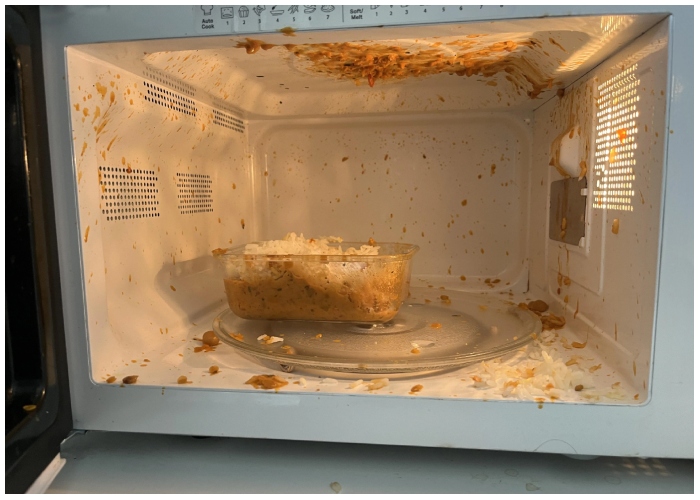
To avoid these problems, always cover your food with a microwave-safe lid or wrap. Covers trap steam, allowing food to heat evenly while preventing spills. A few seconds of preparation can save you significant cleanup time. Lidless containers may seem convenient, but a covered dish ensures a cleaner microwave and more consistent results.
39. Chinese Takeout Boxes
Chinese takeout boxes are handy for storage but not for reheating. Many include thin metal handles that spark when exposed to microwaves, potentially causing fires. Additionally, the paper material isn’t designed to withstand high heat and may release chemicals or catch fire. To reheat safely, transfer your food to a microwave-safe container.
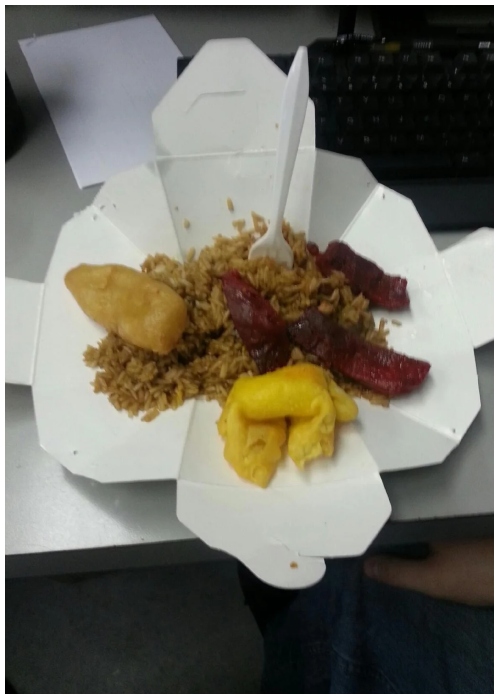
This ensures even warming without the risk of sparks or combustion. Though convenient for carrying food, takeout boxes are not built for cooking. Opt for proper containers to enjoy your leftovers without risking damage to your microwave—or your meal.
40. Running an Empty Microwave
Turning on an empty microwave might seem harmless, but it can damage the appliance. Microwaves need a target to absorb the energy they produce. Without food or liquid to absorb the waves, they bounce around inside the microwave, potentially overheating components and causing them to fail or combust.
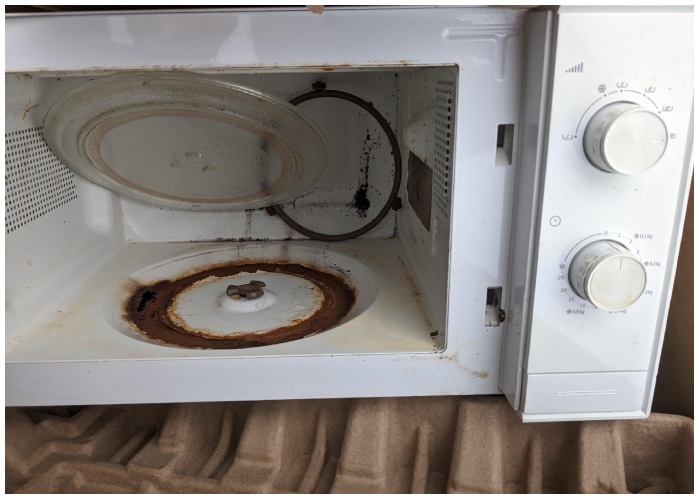
Running the microwave empty can lead to costly repairs or even render the appliance unusable. Always double-check that something is inside before hitting start. Protect your microwave by avoiding this common mistake, and only run it when properly loaded.
41. Metal and Stainless Steel
Metal and stainless steel items, including plates with metallic rims and travel mugs, should never be microwaved. These materials reflect microwaves instead of absorbing them, which can cause sparks, flames, or even fires. Additionally, metal blocks the heat from warming your food or drink, making the process ineffective.
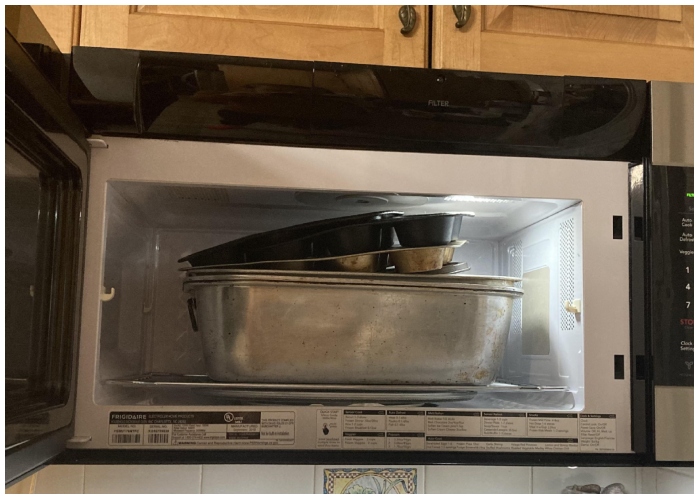
For safe reheating, always use microwave-safe materials like glass or ceramic. While metal may look sturdy, it’s incompatible with the microwave’s energy. Avoid damage to your appliance and potential hazards by keeping anything metallic far from your microwave.
42. Plastic Wrap
Microwaving food covered with plastic wrap can introduce harmful chemicals into your meals. When heated, plastic wrap may melt and release compounds like BPA or phthalates, which are linked to potential health risks such as hormonal disruptions. Even wraps labeled microwave-safe can transfer unwanted chemicals if they come into contact with food.
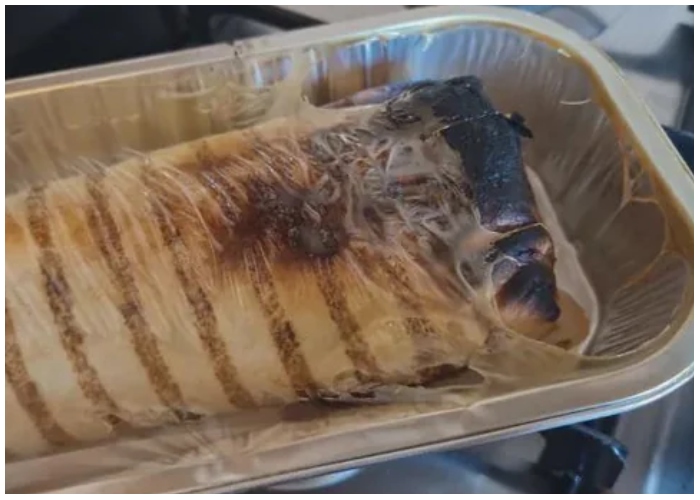
To reheat safely, opt for microwave-safe lids, glass covers, or even plain paper towels to prevent splatters. These alternatives keep your food free from contaminants and protect your health. Avoid the risks by keeping plastic wrap out of the microwave and using safer, heat-resistant solutions.
43. Non-Microwave-Safe Ceramics
Not all ceramic dishes are safe for microwaving. Decorative ceramics or those with metallic accents can overheat, crack, or spark, potentially causing damage to your appliance and contaminating your food. Certain glazes, especially in older or handmade ceramics, may release toxins when exposed to high heat. Always check for a microwave-safe label before using ceramic dishes.
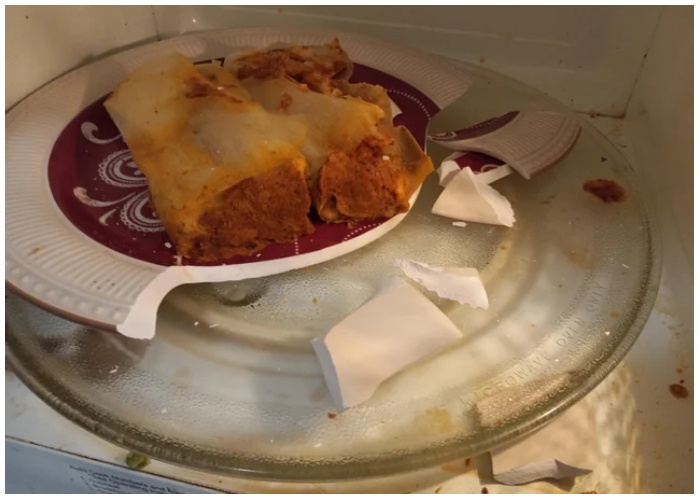
If unsure, transfer food to a certified microwave-safe container. Using improper ceramics can result in uneven heating or even shattered dishes. Avoid accidents and ensure safety by sticking to dishes designed to withstand microwave temperatures.
44. Wooden Utensils
Microwaving wooden utensils, bowls, or cutting boards is not recommended. Wood absorbs moisture and is prone to warping, cracking, or even splintering under high heat. Prolonged exposure can weaken the structure of wooden items, making them unsafe for future use. Additionally, the uneven heating of a microwave can create hotspots that compromise the integrity of the wood.
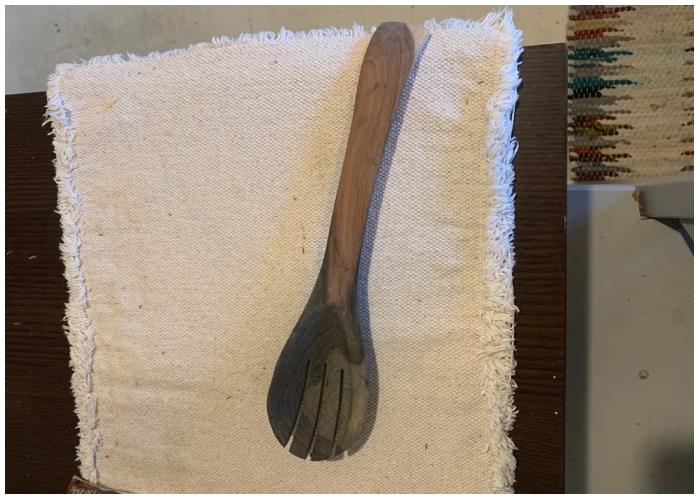
For reheating or cooking, opt for microwave-safe materials like silicone or glass. Proper care of wooden utensils extends their lifespan and ensures your food preparation remains safe and hygienic. Keep wood out of the microwave for better results.
45. Paper Towels with Prints
Plain paper towels are often safe for microwaving, but those with printed designs can pose risks. The dyes or chemicals in the prints may release harmful compounds when exposed to high heat, potentially contaminating your food. Some paper towels also contain synthetic fibers that can ignite, increasing the risk of fires.
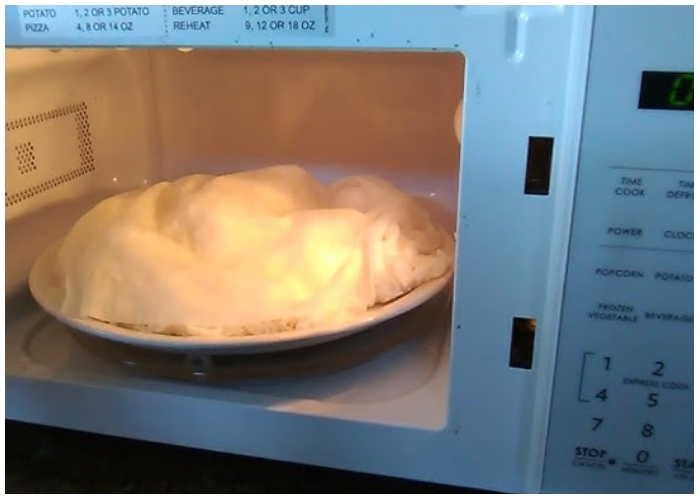
For safer reheating, use plain, unprinted paper towels or microwave-safe covers to prevent spills. These alternatives keep your food free from contaminants and your microwave operating safely. Avoid printed towels to ensure your meal preparation is as clean and safe as possible.
46. Foam Packaging Peanuts
Foam packing peanuts are highly flammable and should never be microwaved. These lightweight materials are designed for packaging, not heating, and can ignite under high temperatures. Additionally, burning foam emits toxic fumes, creating health risks and a potential fire hazard.
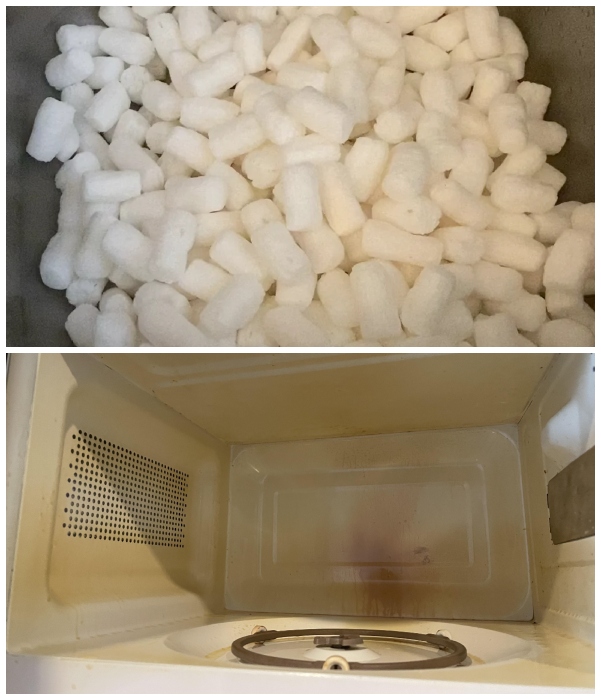
If you need to reheat something packaged with foam peanuts, always transfer it to a microwave-safe container first. Proper handling avoids dangerous situations and ensures safe meal preparation. Foam peanuts are practical for shipping but belong far from the kitchen. Protect your appliance and health by keeping them out of the microwave.
47. Cork
Cork items, such as coasters or wine stoppers, are not microwave-safe. The porous nature of cork makes it prone to drying out, cracking, or even catching fire under high heat. Additionally, the adhesives used in cork products can melt, releasing harmful fumes into your microwave. For safety, avoid placing cork in the microwave altogether.
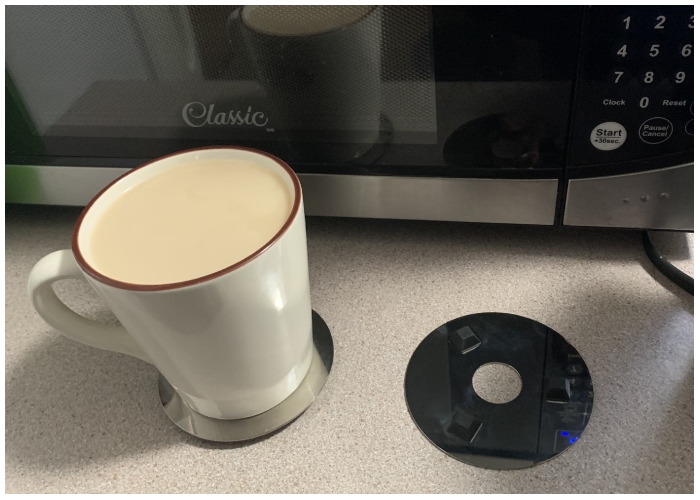
Instead, remove cork stoppers from bottles or jars before reheating and choose heat-resistant materials like glass or silicone. Keeping cork out of the microwave ensures both your appliance and your cork items remain undamaged and safe for continued use.
48. Non-Stick Cookware
Non-stick pans and cookware are not designed for microwave use. The high heat generated can damage the non-stick coating, causing it to release toxic fumes. These fumes may contain harmful compounds such as perfluorooctanoic acid (PFOA), which poses health risks. Additionally, metal components in non-stick cookware can spark and damage your appliance.
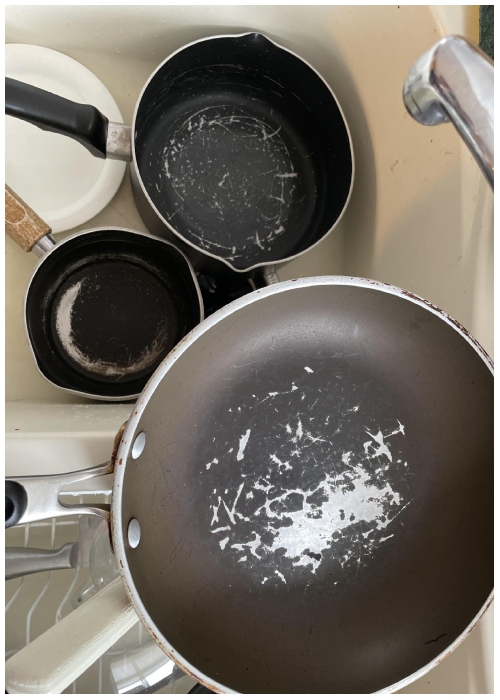
To reheat food safely, transfer it to a microwave-safe container made of glass or ceramic. Proper cookware handling ensures your health and extends the life of your kitchen tools. Keep non-stick pans out of the microwave to avoid unnecessary risks.
49. Sealed Containers
Microwaving food in tightly sealed containers can lead to dangerous pressure buildup. As heat causes steam to form, the lack of ventilation creates an explosive environment. This can cause the container to burst, splattering hot food and creating a safety hazard. Always remove or loosen lids before microwaving to allow steam to escape.
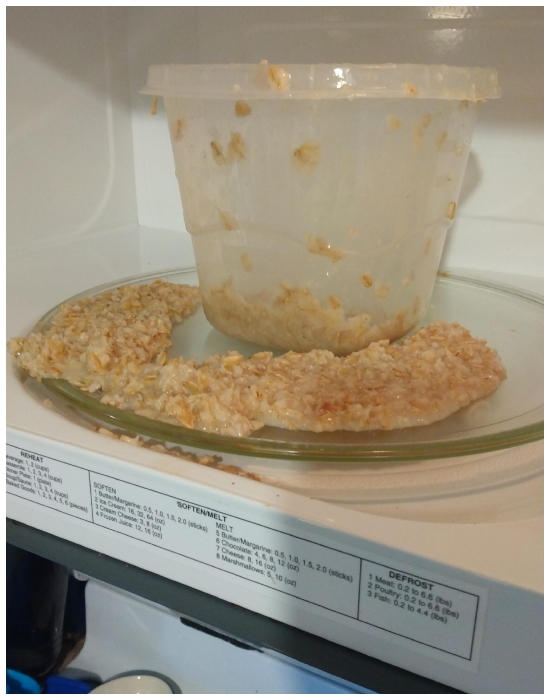
If you’re reheating liquids, consider using a microwave-safe cover with vent holes to prevent spills and ensure even heating. Avoid sealed containers to protect both yourself and your microwave from messy and potentially harmful accidents.
50. Leather
Leather items, such as gloves or small accessories, should never be microwaved. The high heat can scorch or burn the material, leaving it discolored, brittle, or completely ruined. Additionally, some leather products contain synthetic elements or dyes that may melt or release harmful fumes.
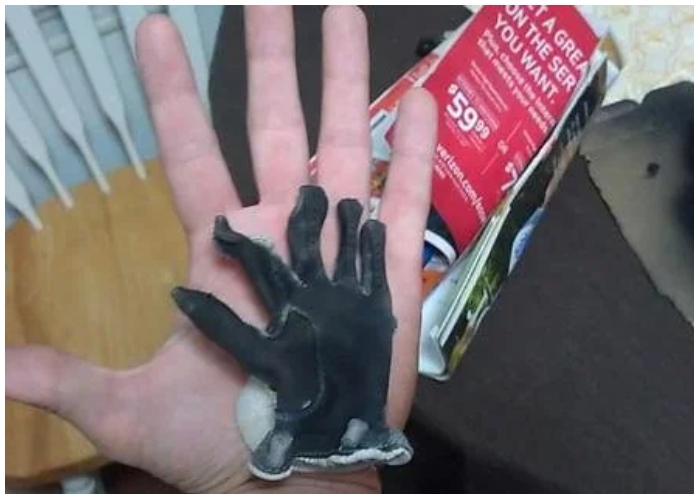
Leather is not designed to withstand rapid heat changes, making the microwave an unsuitable environment. To maintain the integrity of your leather items, avoid microwaving them and use proper cleaning or conditioning methods instead. Protect your belongings and appliance by keeping leather far from the microwave.
51. Glassware Without a Microwave-Safe Label
Not all glassware is microwave-safe. Glass items like decorative bowls, drinking glasses, or jars may crack or shatter when exposed to rapid heat changes. This is especially true for thin or older glass that lacks a microwave-safe label. The uneven heating can cause thermal stress, leading to dangerous breakage.
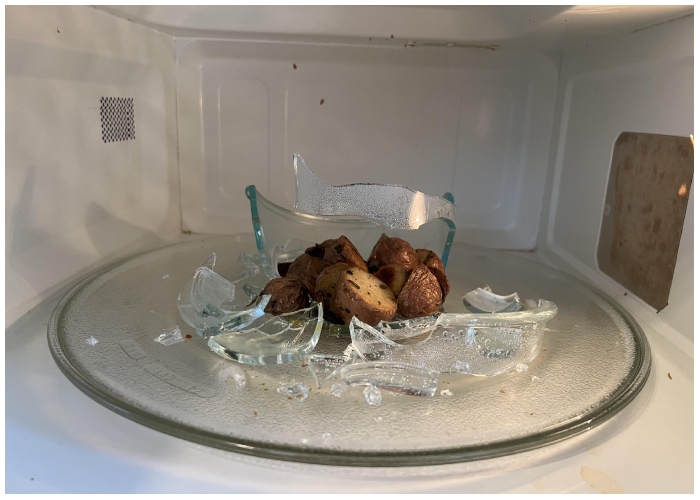
To ensure safety, only use glassware labeled as microwave-safe, and avoid placing cold glass directly into a hot microwave. Transferring food to a certified dish can prevent accidents and protect your appliance. Always check labels to ensure your glassware is suitable for microwave use.